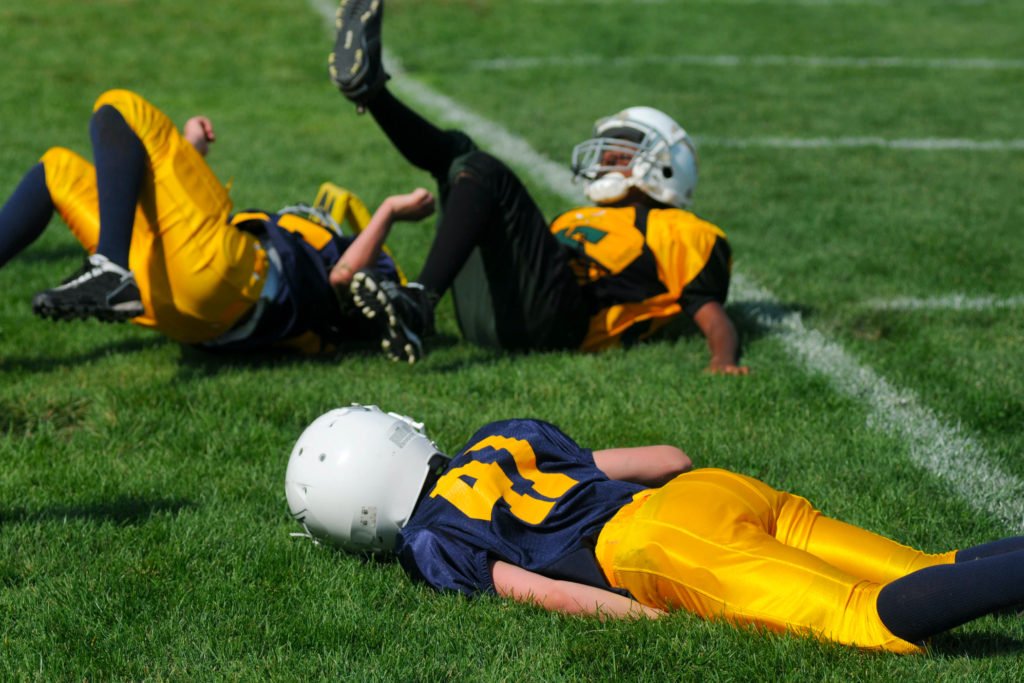Legislature Overhauls Concussion Education, Oversight and Protocols for School Districts

Legislature Overhauls Concussion Education, Oversight and Protocols for School Districts
Aug 17, 2015
Share to:
Despite, and without amending, existing laws in Illinois related to concussion and head injury prevention and detection, the legislature passed a law which adds a new Section 22-80 to the Illinois School Code to further address concerns that some student athletes are prematurely returned to play following a head injury. With the exception of the new training obligation for certain individuals, all other components of the law are effective with the start of the 2015-2016 school year. Here’s what schools need to know:
Obligations of School Board and “Appropriate Administrative Officer”
1. Appoint and approve a concussion oversight team (“COT”).
2. Composition of the COT must include:
a. at least one (1) licensed physician, if practicable;
b. an athletic trainer, if practicable, and if the school employs one;
c. a school nurse, if practicable, and if the school employs one; and
d. a person who is responsible for implementation and compliance with the protocols it adopts . [1]
3. Develop a school-specific emergency action plan (“EAP”) for interscholastic athletic activities [2]“to address the serious injuries and acute medical conditions in which the condition of the student may deteriorate rapidly,” and which shall include a delineation of roles, methods of communication, available emergency equipment, and access to and a plan for emergency transport. The EAP must be:
a. written;
b. reviewed by the COT;
c. reviewed annually by all athletic trainers, first responders, coaches, school nurses, athletic directors and volunteers for such activities;
d. approved by the superintendent or designee;
e. distributed to all appropriate personnel; and
f. posted conspicuously at all venues used by the school.
Obligations of the COT
1. Establish a return-to-play protocol, consistent with CDC guidelines, for a student’s return to athletic competition or practice following an impact believed to have caused a concussion.
2. Establish a return-to-learn protocol, consistent with CDC guidelines, for a student’s return to the classroom after the student is believed to have experienced a concussion, regardless of whether such occurred during participation in school athletics.
Limitations on Student Participation in Interscholastic Athletic Activity
1. Before participating in an interscholastic athletic activity, each school year the student and the student’s parent/ guardian must sign an IHSA-approved form acknowledging receipt and having read written information explaining concussion prevention, symptoms, treatment and oversight that includes return-to-play protocols.[3]
2. A student must be removed from practice or competition if it is believed that he/she may have sustained a concussion.
3. A student removed under No. 2 above, may not return to competition or practice until:
a. the student is evaluated by a physician selected by the student or the student’s parent/guardian or an athletic trainer working under the supervision of a physician, and a note is provided from the physician or athletic trainer indicating that it is safe for the student to return to play and learning;
b. the student has successfully completed the return-to-learn protocol established by the COT, and such is acknowledged by the student and the student’s parent/guardian;
c. the student and the student’s parent/guardian sign a consent form indicating that he/she:
i. is informed and consents to returning to play and learning;
ii. understands the risks of returning to play and learning and will comply with any ongoing requirements under the COT’s protocol; and
iii. consents to the disclosure to appropriate persons (consistent with HIPAA) of the note and other information provided by the physician or athletic trainer (see 3.a. above).
4. A coach is prohibited from authorizing a student’s return to play and/or learning.
Training Obligations by September 1, 2016 and Proof of Completion Submitted to Superintendent or Designee
1. The IHSA is directed to approve training courses and providers in the subject of concussions for coaches and game officials. Such training must be taken at least once every 2 years by: coaches; game officials; and a nurse serving on the COT (volunteer or employee capacity).
2. A physician on the COT shall periodically take an appropriate continuing medical education course in the subject of concussions.
3. An athletic trainer must take a concussion-related continuing education course from an athletic trainer continuing education sponsor approved by the Department of Financial and Professional Regulation (the “Department”).
4. A school nurse must take a concussion course that has been approved for continuing education credit by the Department.
Catherine R. Locallo, an associate in the firm’s Chicago Office, prepared this In Brief.
[1] This person must be supervised by the superintendent or designee, but the designee cannot be a coach.
[2] This includes all interscholastic athletics, and the law expressly includes “marching band” in this grouping.
[3] IHSA has existing written materials and a consent form available on its website, along with education materials, courses, policies and protocols. It is unclear at the time of this publication whether and when the IHSA may update these documents to the extent necessary to comply with this new law.
